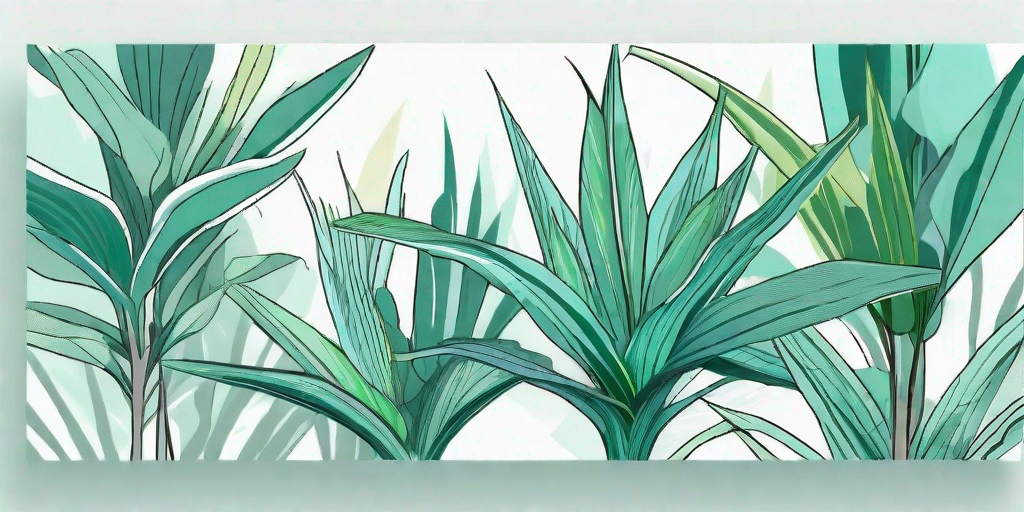
Welcome, fellow green-thumbed enthusiasts and curious readers! Today, we're diving deep into the world of Dracaena, a genus of plants that's as mysterious as it is beautiful. If you've ever wondered why your Dracaena leaves are turning yellow, or how to propagate these leafy wonders, you're in the right place. So, put on your gardening gloves, grab your trowel, and let's get started!
Understanding Dracaena: The Basics
Before we delve into the nitty-gritty, let's get to know our subject a little better. Dracaena, derived from the ancient Greek word 'drakaina' meaning 'female dragon', is a family of around 120 different species of plants. These leafy beauties are native to Africa, Southern Asia, and Central America. But don't worry, they're not fire-breathing monsters. The only thing they'll be burning is your friends' envy when they see your thriving Dracaena!
Dracaena plants are known for their long, arching leaves that grow out of a central, woody stem. They come in a variety of colors, from the deep green of the Dracaena Janet Craig to the vibrant red of the Dracaena marginata. But enough of the introductions, let's get down to business.
Why Are My Dracaena Leaves Turning Yellow?
One of the most common questions we get is, "Why are my Dracaena leaves turning yellow?" Well, dear reader, there are several reasons for this. Let's break it down, shall we?
Overwatering
Dracaena plants are a bit like Goldilocks when it comes to water - they like it just right. Too much water and the roots can become waterlogged, leading to yellowing leaves. So, if your Dracaena is looking a little jaundiced, you might want to ease up on the watering.
Underwatering
On the other hand, if you've been neglecting your Dracaena's thirst, it could also lead to yellow leaves. Remember, these plants are used to tropical climates where rain is plentiful. So, if your watering can has been gathering dust, it might be time to give it a workout.
How to Care for Your Dracaena
Now that we've covered the basics and solved the mystery of the yellow leaves, let's move on to the fun part - caring for your Dracaena. Here's a step-by-step guide to keeping your leafy friend happy and healthy.
- Light: Dracaena plants love bright, indirect light. Too much direct sunlight can scorch their leaves, while too little light can stunt their growth. Find a sunny spot in your home, but keep them out of the direct path of the sun's rays.
- Water: As we've already discussed, Dracaena plants like their water just right. Water your plant thoroughly, then let the soil dry out before watering again. This will prevent waterlogging and root rot.
- Temperature: Dracaena plants prefer a warm, humid environment. Keep your plant in a room with a temperature between 60-75°F (15-24°C) and mist the leaves regularly to increase humidity.
Propagating Your Dracaena
So, you've mastered the art of Dracaena care and now you want to spread the love. Propagating your Dracaena is a great way to share your green-thumbed skills with friends and family. Here's how to do it.
- Cut a stem: Using a clean, sharp knife, cut a stem from your Dracaena plant. Make sure the stem is healthy and has at least one leaf node (a small bump where new leaves grow).
- Root the cutting: Place the cutting in a glass of water, making sure the leaf node is submerged. Change the water regularly to prevent rot.
- Plant the cutting: Once the cutting has developed roots, plant it in a pot with well-draining soil. Water thoroughly and place in a bright, indirect light.
Frequently Asked Questions
- Why are my Dracaena leaves turning brown? Brown leaves can be a sign of underwatering or low humidity. Try increasing your watering schedule and misting the leaves to increase humidity.
- Can Dracaena plants grow outdoors? Dracaena plants can grow outdoors in USDA zones 10-12. In cooler climates, they should be grown indoors or in a greenhouse.
- Are Dracaena plants toxic to pets? Yes, Dracaena plants are toxic to cats and dogs. If ingested, they can cause vomiting, loss of appetite, and excessive drooling.
And there you have it, a comprehensive guide to the mysterious world of Dracaena leaves. Whether you're a seasoned gardener or a budding plant parent, we hope this guide has shed some light on these beautiful plants. Now, go forth and garden!















